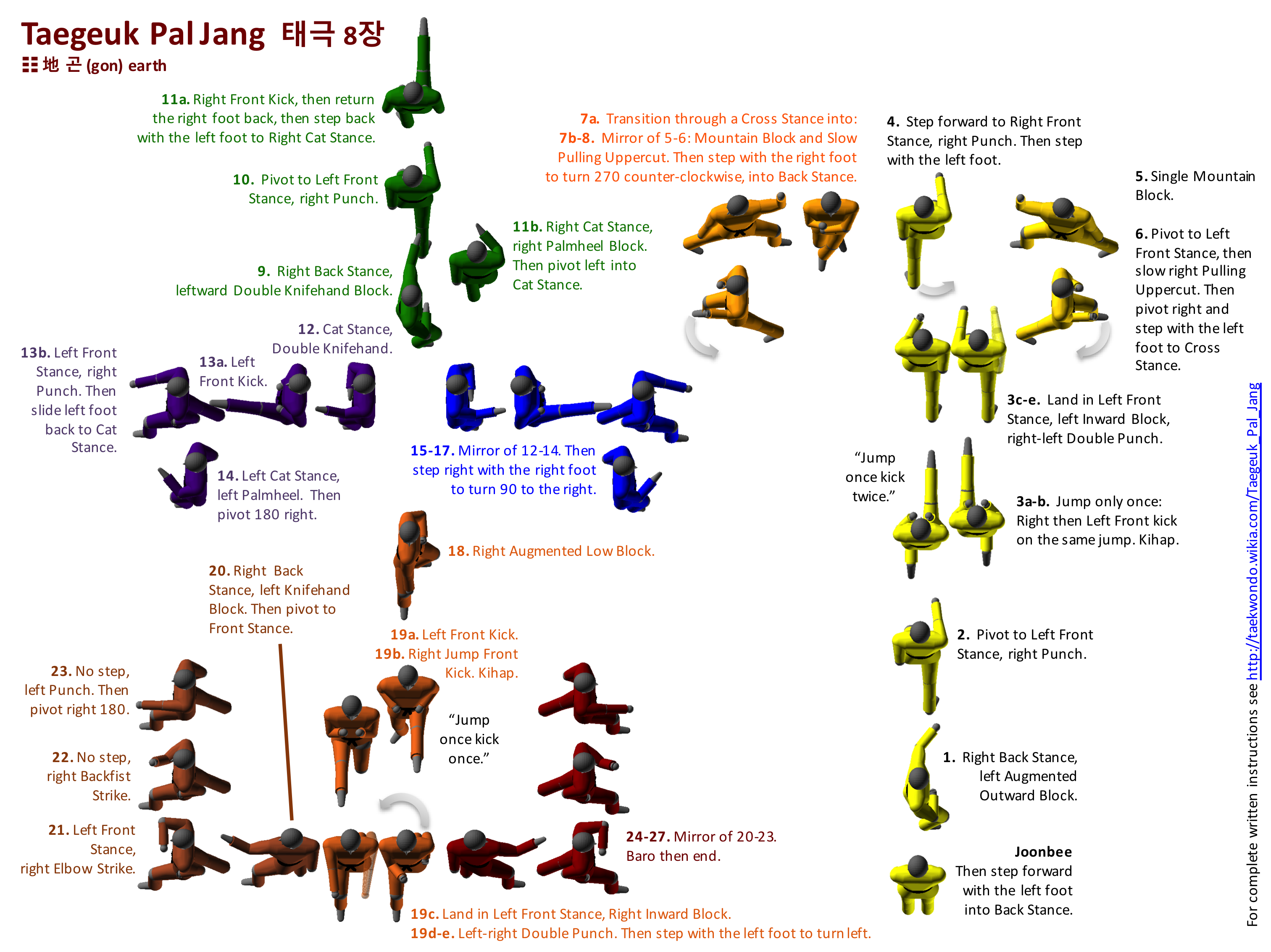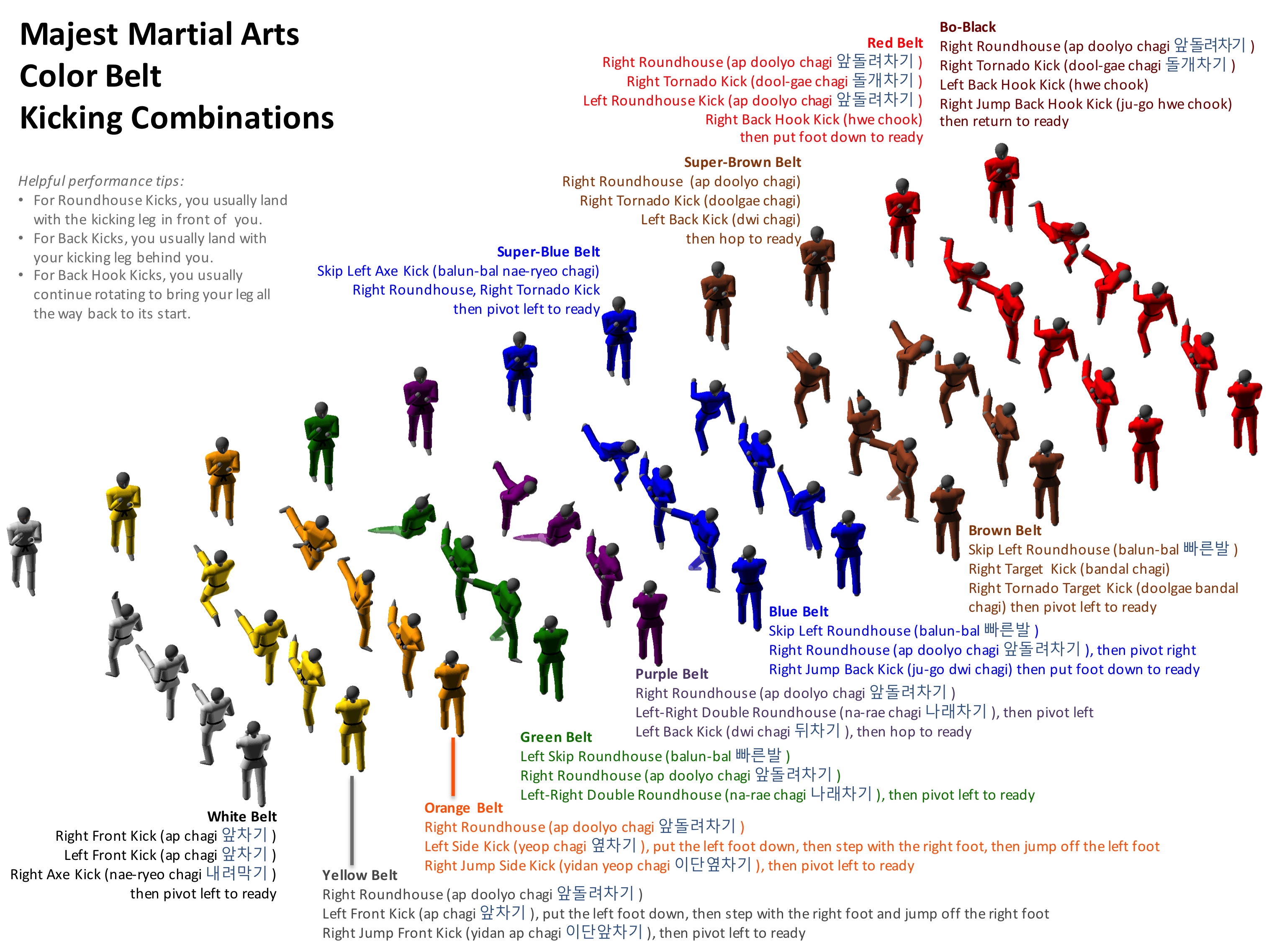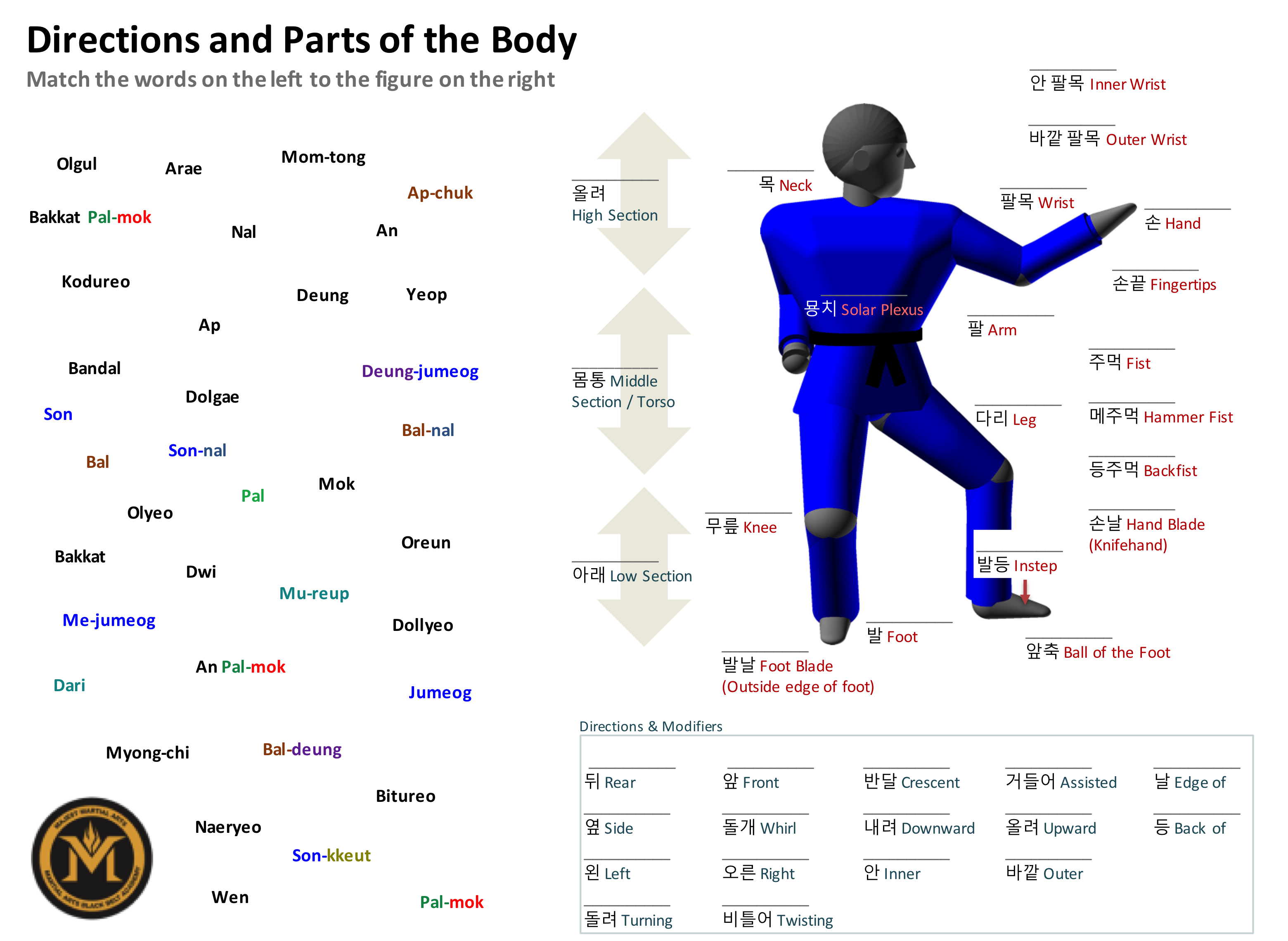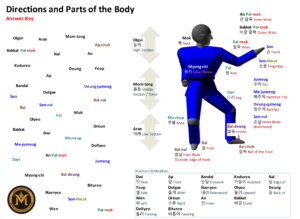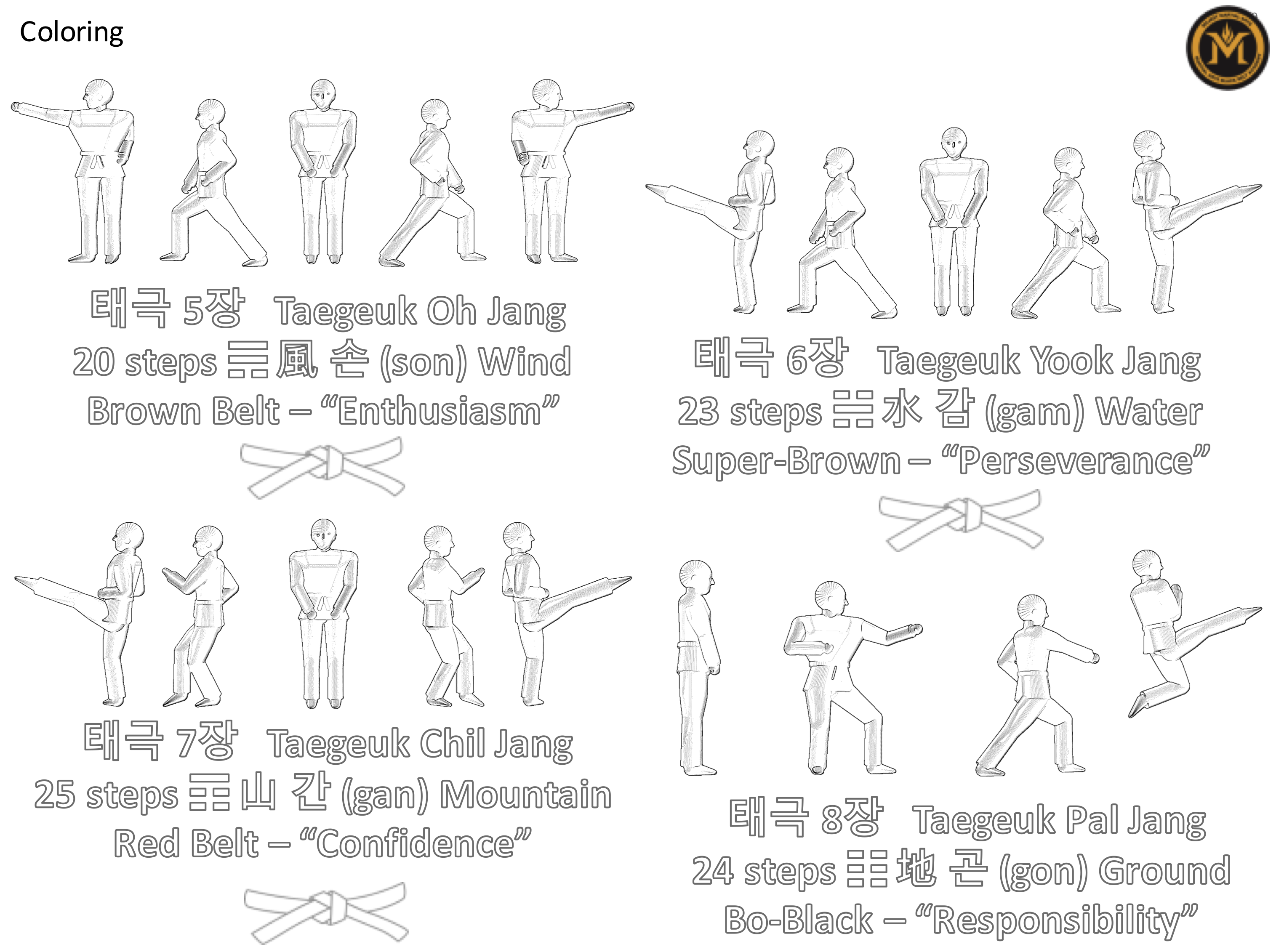BoBlack Belt Curriculum
Majest Martial ArtsAt Majest, Taegeuk Pal Jang is the form practiced by black-belts-in-training, also called Bo-Black or Bo-Dan rank. Students typically spend many months at this rank, preparing for their 1st Degree Black Belt test. The I Ching trigram for this form (☷) represents the ground — the ground is a solid foundation for the world, just as this form demonstrates that the student has achieved a solid foundation for future Black Belt training. The fact that this trigram (☷) is made up of three broken lines indicates that each major turn in this poomsae is performed by pivoting-in-place (the transition through Front Cross Stance at step 7a is considered a pivot).
Taegeuk Pal Jang is truly a beautiful poomsae and a lovely capstone to the Taegeuk series of poomsae. The are so many movements in this form that are challenging to perform gracefully: the Double Jump Front Kick at steps 3a-b, the Single Mountain Blocks at steps 5 and 7, the front-leg kick from the Cat Stance at steps 12 and 15 — truly, a student can spend a lifetime practicing to make this form beautiful – it has wonderful depth. The performances in the videos below are excellent illustrations of this difficult form. For more detail about this form, including written instructions, see: Taegeuk Pal Jang.
Bo-Black, Taegeuk Pal Jang (step by step)
Bo-Black Taegeuk Pal Jang (with written instructions)
Bo-Black Taegeuk Pal Jang
Bo-Black breaking
For Bo-Black students at Majest, the breaking technique is a 4-station break, meaning there are 4 board-breaks in this combination. From this point forward in the student’s instruction, all breaking techniques are multi-station breaks. The goal in multi-station breaks is to transition quickly and smoothly from one break to the next, without long pauses or retries in the combination — this requires much practice.
Bo-Black kicking combination
The video below illustrates the kicking combination practiced by Bo-Black students at Majest: a Roundhouse Kick (ap-dool-yo chagi) with the right leg, pivoting counter-clockwise into a Tornado Kick (also called a 360 Roundhouse, dool-gae-chagi) again with the right leg, continuing to pivot counter-clockwise into a Back Hook Kick (hwe chook, or “arcing heel”) now with the left leg, to land with the right-leg forward. After landing, immediately pivot clockwise to a Jump Back Hook Kick (jugo hwe chook), with the right leg, then return to ready.
Bo-Black - How Parents Can Help
At this point in your child’s TaeKwonDo education, they should have good limberness and good technique. All of their kicks should be high (higher than their waists at least), and their movements should look graceful and powerful. If this is not yet the case, there are some things you can do to help: To improve limberness, stretch together with your child, focusing especially on seated hamstring stretches and splits. To improve snap, ensure that your child is “chambering” for all of the movements correctly, as explained at previous belt levels.
Really though, where most children have trouble at this level is simply remembering all of the many forms learned up until now: a total of 11 forms in all (3 Kibon forms, and 8 Taegeuk forms). So the best way you can help is by helping your child to learn to remember all of these forms. Each night, pick one of the videos in this series and watch it with your child. Have the child perform it for you. This only takes a few minutes each night, but it makes a huge difference in terms of their ability to remember all of the material.
And finally, be aware that at this point your child will begin preparing for the next upcoming Black Belt test. There will be extra practice sessions required to get ready for this test — to the extent that you can, be flexible with your child’s schedule to ensure that he or she can come to as many of the practice sessions as possible. It’s at these practice sessions that you’ll see the most improvement in your child’s ability.
If your child has shown an interest in the cultural and linguistic side of TaeKwonDo instruction, here are some additional resources for further study. As an upcoming Black Belt, learning more about the culture and historical aspects of TaeKwonDo is a worthwhile use of one’s time.
Answer key:
Just for Fun
Print and color!









